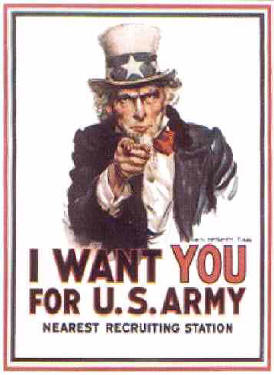 I'm curious. I wonder if the trend covered in this story -- "Youths in Rural U.S. Are Drawn To Military" -- has anything to do with two other stories that I have tried to follow closely for this blog. I refer to the growing tensions among military chaplains and the growing tensions about religious expression at military academies.
Here's the lead from reporter Ann Scott Tyson at The Washington Post:
I'm curious. I wonder if the trend covered in this story -- "Youths in Rural U.S. Are Drawn To Military" -- has anything to do with two other stories that I have tried to follow closely for this blog. I refer to the growing tensions among military chaplains and the growing tensions about religious expression at military academies.
Here's the lead from reporter Ann Scott Tyson at The Washington Post:
As sustained combat in Iraq makes it harder than ever to fill the ranks of the all-volunteer force, newly released Pentagon demographic data show that the military is leaning heavily for recruits on economically depressed, rural areas where youths' need for jobs may outweigh the risks of going to war.
More than 44 percent of U.S. military recruits come from rural areas, Pentagon figures show. In contrast, 14 percent come from major cities. Youths living in the most sparsely populated Zip codes are 22 percent more likely to join the Army, with an opposite trend in cities. Regionally, most enlistees come from the South (40 percent) and West (24 percent).
I wonder if there are similar patterns among the men and women stepping forward to be chaplains? To apply for acceptance at the military academies? There are more Southern Baptists and Pentecostal believers in small towns than there are Episcopalians and Unitarian Universalists.
This story focuses on the role that hard times play in smaller rural communities, pushing many young people to enlist in the military for economic reasons. I have no doubt that this plays a major role in this trend. However, it does not take a degree in demographics -- after recent years of red-blue and "pew gap" studies -- to wonder if this Pentagon study doesn't raise religious questions, as well. (Personal note: Yes, it is hard for this commentator to avoid use of the unpopular "ghost" metaphor at this point.)
In other words, we can probably expect more tensions between military personnel from red zip codes and lawyers working for elites in blue zip codes.
